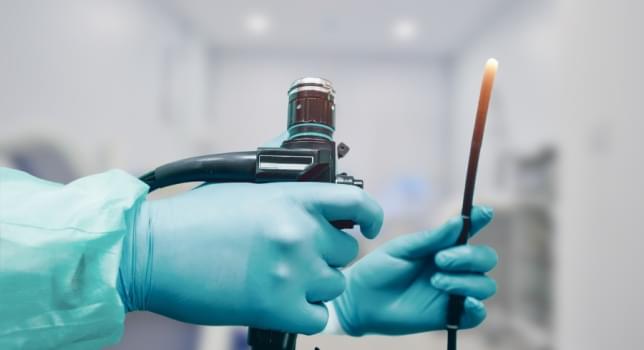Achieving ISO 13485 certification is a critical milestone for any medical device supplier. This international standard outlines the requirements for a quality management system (QMS) specific to the medical device industry, ensuring that suppliers consistently meet customer and regulatory requirements. While the benefits of certification are significant—enhanced market access, improved processes, and greater customer trust—the path to compliance is often fraught with challenges. Understanding these potential hurdles is the first step toward overcoming them.
This article details the most common challenges medical device suppliers encounter during the ISO 13485 certification process. By preparing for these obstacles, your organization can develop a more strategic and efficient approach to compliance, minimizing delays and ensuring a successful outcome. We will examine issues ranging from resource allocation and documentation to risk management and supplier control, providing a comprehensive overview to guide your certification journey.
Inadequate Resource Allocation
One of the most significant initial hurdles is the underestimation of the resources required for ISO 13485 implementation. Achieving compliance is not a task that can be delegated to a single department or managed on a shoestring budget. It demands a substantial investment of time, finances, and personnel from across the organization.
Financial and Personnel Commitment
Management often underestimates the financial costs associated with certification. These costs extend beyond the audit fees and include expenses for:
- Training employees on the new QMS procedures.
- Hiring consultants or subject matter experts.
- Upgrading facilities or equipment to meet regulatory standards.
- Investing in software for documentation control and record-keeping.
Equally important is the allocation of human resources. Key personnel will need to dedicate significant time to developing, implementing, and maintaining the QMS. Without sufficient staff dedicated to the project, existing employees can become overburdened, leading to burnout and a higher risk of errors in the implementation process. A successful strategy requires a dedicated project team with clear roles and the authority to enact change.
Poor Documentation and Record-Keeping
ISO 13485 places a strong emphasis on comprehensive documentation. The standard requires organizations to maintain extensive records for everything from design and development to post-market surveillance. Many suppliers falter due to incomplete, inconsistent, or inaccessible documentation.
The Challenge of Control and Consistency
Effective document control is a cornerstone of a robust QMS. Common documentation pitfalls include:
- Lack of Version Control: Using outdated versions of documents can lead to non-conformities and process errors. A system must be in place to ensure that only the current, approved versions of documents are in use.
- Inconsistent Procedures: Procedures may be poorly written, ambiguous, or not reflective of actual practices. This creates confusion among employees and makes it difficult to ensure consistent process execution.
- Inadequate Record-Keeping: Failing to maintain complete and accurate records is a frequent cause of non-conformance during audits. Records provide the objective evidence that processes are being followed correctly and that products meet specified requirements.
Implementing a centralized, electronic document management system can help address these challenges by automating version control, standardizing templates, and providing a secure repository for all records.
Insufficient Risk Management Processes
Risk management is a fundamental component of ISO 13485, integrated throughout the entire product lifecycle. The standard requires a proactive approach to identifying, evaluating, and mitigating risks associated with medical devices. However, many suppliers struggle to implement a comprehensive risk management process that aligns with the requirements of ISO 14971, the associated standard for risk management for medical devices.
Integrating Risk Management into the QMS
A common mistake is treating risk management as a standalone activity performed only during the design phase. ISO 13485 mandates that risk-based thinking be applied to all QMS processes, including supplier selection, production, and post-market activities. Suppliers must demonstrate that they have:
- Established a formal risk management process.
- Identified and assessed potential hazards.
- Implemented and verified the effectiveness of risk control measures.
- Monitored risks throughout the product lifecycle and updated risk assessments as new information becomes available.
Failure to embed risk management into the fabric of the QMS can result in significant compliance gaps and, more importantly, compromise patient safety.
Lack of Management Commitment
Without unwavering support from top management, any ISO 13485 certification initiative is likely to fail. Leadership must do more than just approve the budget; they must actively champion the QMS, promote a culture of quality, and hold the organization accountable for compliance.
Leading from the Top
Management's role includes:
- Defining the quality policy and objectives.
- Ensuring that roles and responsibilities are clearly defined.
- Providing the necessary resources for implementation.
- Participating in management reviews to assess the effectiveness of the QMS.
When employees see that leadership is fully invested in the certification process, they are more likely to embrace the changes and adhere to the new procedures. A visible lack of commitment from the top can breed resistance and undermine the entire effort.
Ineffective Supplier and Subcontractor Control
Medical device suppliers are responsible for the quality of all materials, components, and services provided by their own suppliers. ISO 13485 requires organizations to establish and maintain rigorous controls over their supply chain. This is an area where many suppliers fall short, often due to inadequate evaluation and monitoring processes.
Establishing Robust Supplier Criteria
Effective supplier control involves:
- Initial Evaluation: Assessing potential suppliers based on their ability to meet specified requirements. This may include on-site audits, quality history reviews, and verification of their own certifications.
- Clear Requirements: Clearly communicating all product and quality requirements to suppliers through purchase orders and quality agreements.
- Ongoing Monitoring: Continuously monitoring supplier performance and periodically re-evaluating their capabilities.
Failing to manage the supply chain effectively introduces significant risks, as a non-conforming component from a third-party vendor can compromise the safety and performance of the final medical device.
Preparing for a Successful Audit
The journey to ISO 13485 certification requires meticulous planning, dedicated resources, and an organization-wide commitment to quality. By anticipating the common challenges—such as inadequate resource allocation, poor documentation, insufficient risk management, lack of leadership commitment, and ineffective supplier control—medical device suppliers can proactively develop strategies to mitigate them.
Successfully navigating the certification process not only opens doors to new markets and strengthens regulatory compliance but also fosters a culture of continuous improvement. This commitment to quality ultimately enhances product safety and builds lasting trust with both customers and regulators. Investing the necessary effort upfront will pave the way for a smoother certification process and long-term business success.
For organizations seeking to achieve ISO 13485 certification or looking to strengthen their quality management systems, we are here to assist you every step of the way. Request a personalized quote or contact us today to learn more about our comprehensive support services.





